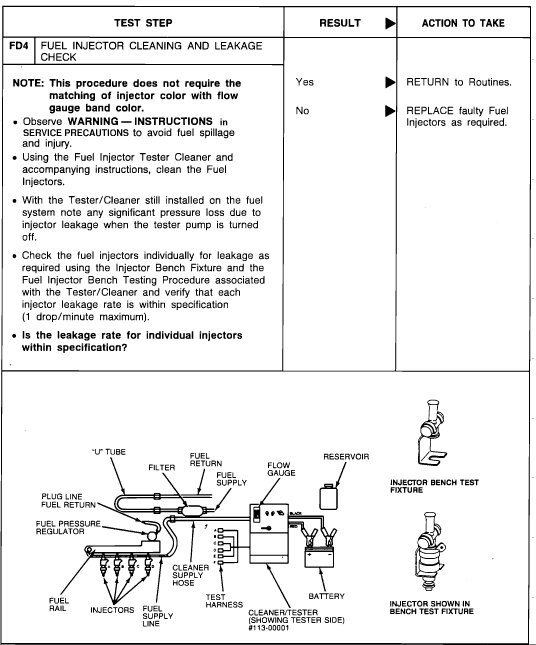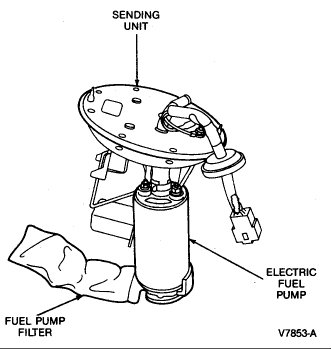Hi and thanks for using 2CarPros. Com.
Do not attempt a carburetor rebuild. The engine is fuel injected. Take a look at picture 1. It describes how to clean and inspect:
Next, check fuel pump pressure. Even though you hear it running, it may not be producing. The pressure should be:
Fuel Pressure 25-31 psi
If you find there is no pressure and you know the lines are clear, the pump most likely is bad. Here are the directions for replacement.
1991 Ford Festiva L4-81 1.3L SOHC
Vehicle � Powertrain Management � Fuel Delivery and Air Induction � Fuel Pump � Service and Repair
SERVICE AND REPAIR
WARNING: Do not smoke, carry lighted tobacco or open flame of any type when working on or near any fuel related component. Highly flammable mixtures are always present and may be ignited, resulting in possible personal injury.
CAUTION: Fuel supply lines will remain pressurized for long periods of time after engine shut down. This pressure must be relieved before servicing of the fuel system is begun. A valve is provided on the throttle body for this purpose. Remove the air cleaner and relieve system pressure by using Rotunda pressure gauge tool T80L-9974-A or equivalent and drain the system through the drain tube.
Removal
Relieve the fuel pressure as follows:
Remove the rear seat cushion.
Run the engine while disconnecting the fuel pump electrical connector.
Allow the engine to stall. Fuel pressure is now relieved.
Remove the fuel tank sending unit.
Remove the fuel filter from the pump.
Remove two fuel pump wires from the sending unit.
Remove the retaining clamp screw.
Remove the pump outlet hose clamp.
Remove the fuel pump from the sending unit.
Installation
Install the fuel pump to the sending unit bracket and secure with the retaining clamp.
Install the pump outlet hose and secure with the clamp.
Connect the fuel pump wires to the sending unit.
Install the fuel pump filter.
Install the sending unit onto the fuel tank.
NOTE: Before installing the sending unit access cover, start the engine and check for leaks at the fuel line connections.
Install the rear seat.
_____________________________________________
Note, there is a fuel filter/strainer attached to the pump. I recommend replacing it, too. See picture 2.
Let me know if this helps or if you have other questions.
Take care,
Joe
Images (Click to make bigger)
Monday, June 11th, 2018 AT 7:57 PM





